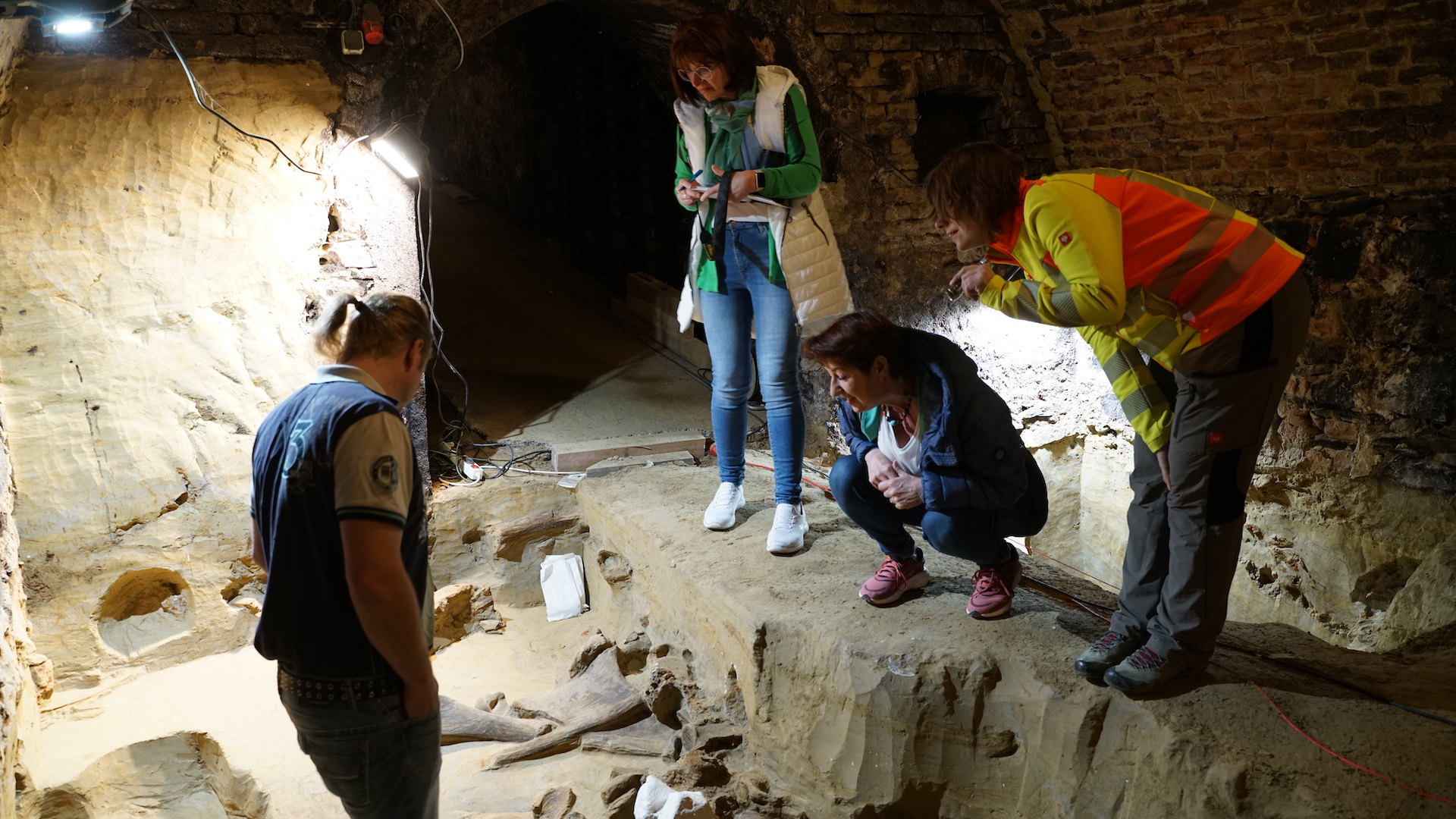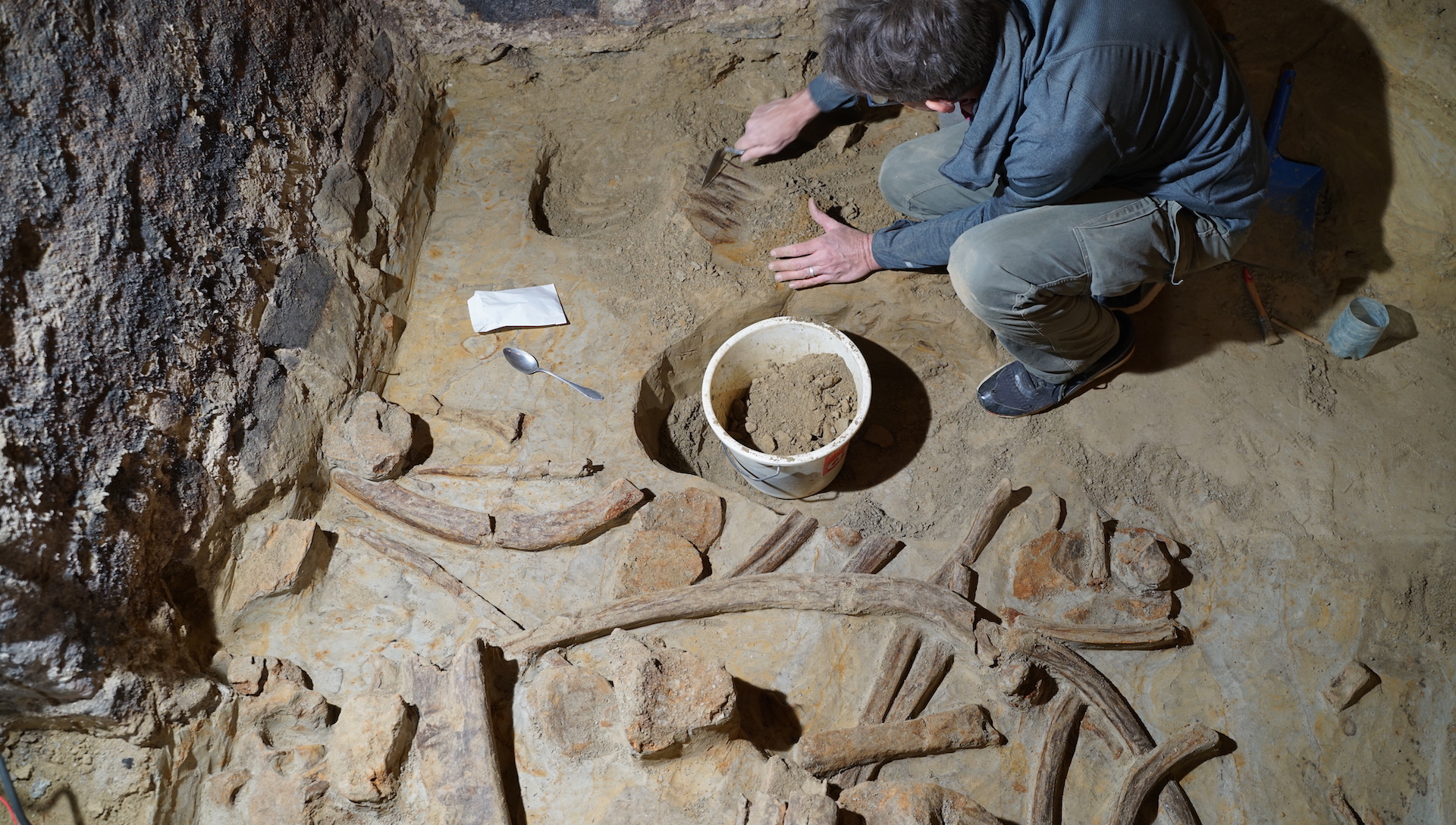
A winemaker in Austria has discovered hundreds of mammoth bones underneath his wine cellar.
Andreas Pernerstorfer came across the bones in March while renovating his cellar in the village of Gobelsburg, northwest of Vienna, CNN reported. At first, he mistook a bone for wood.
"I thought it was just a piece of wood left by my grandfather," Pernerstorfer told the Austrian Broadcasting Corporation (ORF), according to BBC News. "But then I dug it out a bit, and then I remembered that in the past, my grandfather said he had found teeth. And then I immediately thought it was a mammoth."
Researchers uncovered around 300 bones from at least three individual mammoths. A comparable discovery of bones and human artifacts was made in a neighboring cellar 150 years ago, according to a statement released by the Austrian Archaeological Institute (OeAI), part of the Austrian Academy of Sciences.
Researchers from the OeAI are excavating the bones and think the two cellars probably sit on the same ancient site, Smithsonian Magazine reported. But the new discovery is an "archaeological sensation," according to the statement.
Related: Woolly mammoth de-extinction inches closer after elephant stem cell breakthrough
"Such a dense bone layer of mammoths is rare," Hannah Parow-Souchon, an archaeologist at the OeAI, said in the statement. "It's the first time we've been able to investigate something like this in Austria using modern methods."

The team estimated the bones were between 30,000 and 40,000 years old. They also found stone artifacts and charcoal in the wine cellar, according to the statement.
There are still a number of unknowns that researchers are trying to piece together, including how the near-complete remains of the mammoths ended up so close to one another. One possible explanation is that humans hunted the three animals.
"We know that humans hunted mammoths, but we still know very little about how they did it," Parow-Souchon said in the statement.
Humans might have killed the mammoths by chasing them to the site and setting a trap for them there, according to the statement.







